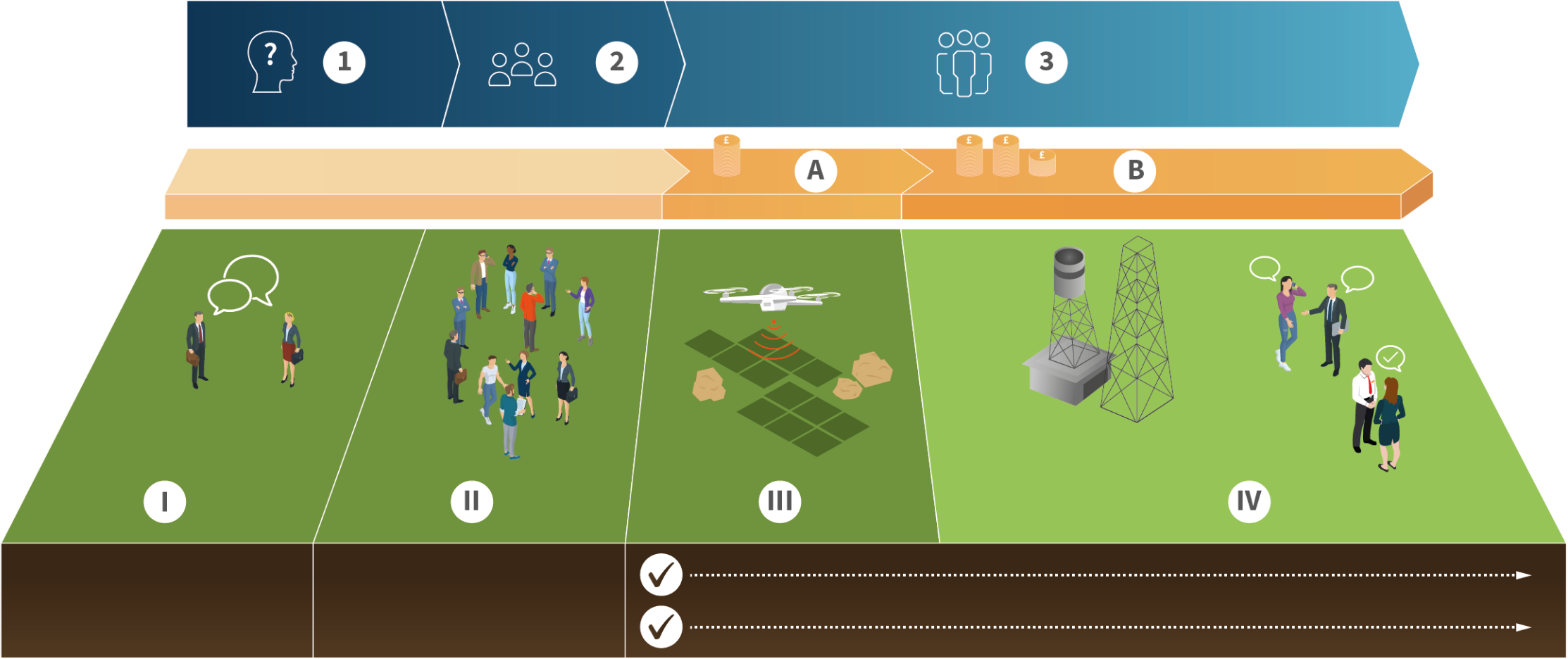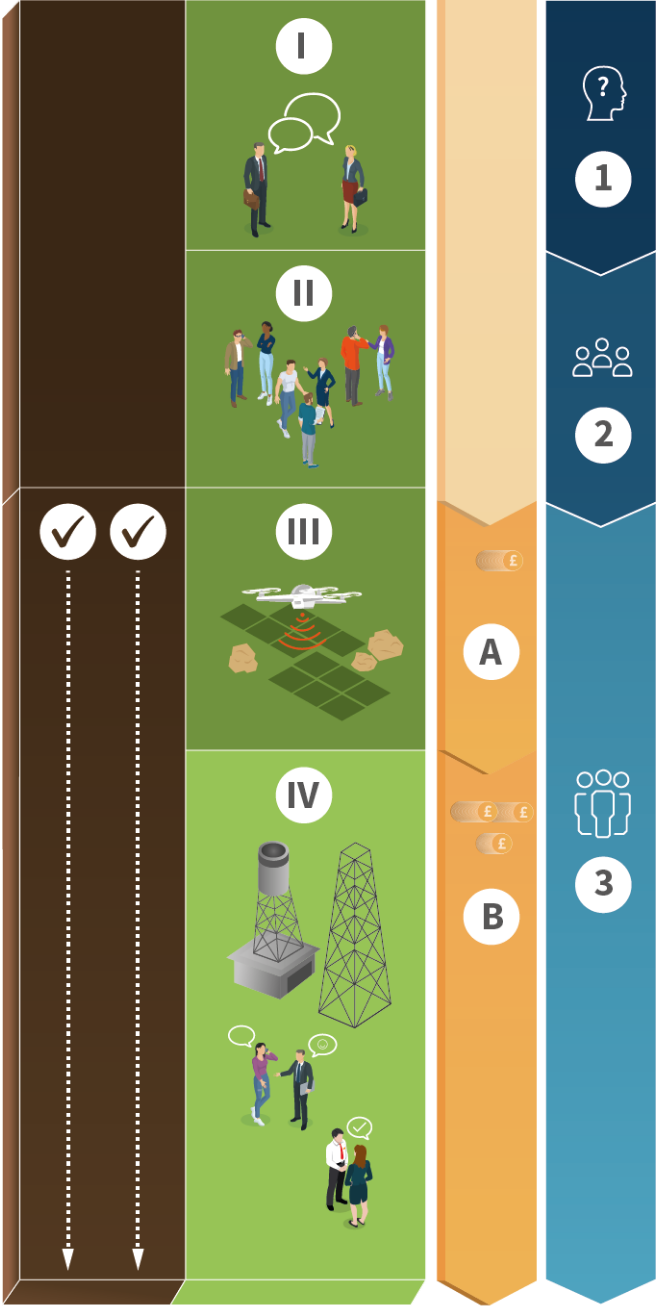East Riding of Yorkshire Council has upheld a motion to withdraw from the GDF Siting Process.
A Geological Disposal Facility, or GDF, is an underground facility designed to safely and securely dispose of our radioactive waste – specifically ‘higher-activity’ waste.
It involves building a series of specially designed and engineered vaults and tunnels deep underground. It could potentially be as deep as England’s tallest mountain (Scafell Pike) is high.
Once the waste is placed inside a GDF, the facility will eventually be permanently sealed. The way the facility is designed and engineered means it can be sealed to protect people and the environment for hundreds of thousands of years, without needing any maintenance, while the radioactivity fades away naturally.
Scientists and other authorities all over the world agree that a GDF is the safest way to deal with ‘higher-activity’ radioactive waste for the long term. This international consensus comes after decades of scientific research.
The Office for Nuclear Regulation and the Environment Agency will review the designs for a GDF, the proposed site, and the science that informs them, to make sure it protects people and the environment. A GDF will only be built if it can be shown to be safe for both people and the environment. As soon as construction starts on a GDF, the site will have to meet strict safety standards.
The Working Group will start a conversation about geological disposal with the local community. It will propose an area for a future Community Partnership to consider, and work to identify who should be in that Community Partnership. You can meet the Working Group members here.
The Community Partnership can then continue the conversation, work to develop a vision for the future of the community and listen to people’s views.
Then much later, when everyone’s had plenty of time to get informed and make up their minds, and before any final decision is made, there will be what’s known as ‘a Test of Public Support’. This will give the local Community a chance to say whether they support the development or not. Without Community support, the project will not go ahead.
The Interested Party was particularly interested to understand whether areas in the south of the region such as around Goole or the southern parts of Holderness hold potential to build a GDF as there may be the opportunity for alignment with some of the existing economic priorities for the region.
For that reason, together with readily available geological information, the Working Group has decided to focus its engagement in the South Holderness area.
As part of the Working Group’s main tasks, it will identify a ‘Search Area’, the area in which it wants the GDF developer – Nuclear Waste Services (NWS) – to focus its technical work. This Search Area will be passed to the Community Partnership to manage, if one is formed. The community will be engaged in discussion throughout this process.
You can read more on our Finding a suitable site page.
A Geological Disposal Facility, or GDF, is an underground facility designed to safely and securely dispose of our radioactive waste – specifically ‘higher-activity’ waste.
It involves building a series of specially designed and engineered vaults and tunnels deep underground. It could potentially be as deep as England’s tallest mountain (Scafell Pike) is high.
Once the waste is placed inside a GDF, the facility will eventually be permanently sealed. The way the facility is designed and engineered means it can be sealed to protect people and the environment for hundreds of thousands of years, without needing any maintenance, while the radioactivity fades away naturally.
Scientists and other authorities all over the world agree that a GDF is the safest way to deal with ‘higher-activity’ radioactive waste for the long term. This international consensus comes after decades of scientific research.
The Office for Nuclear Regulation and the Environment Agency will review the designs for a GDF, the proposed site, and the science that informs them, to make sure it protects people and the environment. A GDF will only be built if it can be shown to be safe for both people and the environment. As soon as construction starts on a GDF, the site will have to meet strict safety standards.
The Working Group will start a conversation about geological disposal with the local community. It will propose an area for a future Community Partnership to consider, and work to identify who should be in that Community Partnership. You can meet the Working Group members here.
The Community Partnership can then continue the conversation, work to develop a vision for the future of the community and listen to people’s views.
Then much later, when everyone’s had plenty of time to get informed and make up their minds, and before any final decision is made, there will be what’s known as ‘a Test of Public Support’. This will give the local Community a chance to say whether they support the development or not. Without Community support, the project will not go ahead.
The Interested Party was particularly interested to understand whether areas in the south of the region such as around Goole or the southern parts of Holderness hold potential to build a GDF as there may be the opportunity for alignment with some of the existing economic priorities for the region.
For that reason, together with readily available geological information, the Working Group has decided to focus its engagement in the South Holderness area.
As part of the Working Group’s main tasks, it will identify a ‘Search Area’, the area in which it wants the GDF developer – Nuclear Waste Services (NWS) – to focus its technical work. This Search Area will be passed to the Community Partnership to manage, if one is formed. The community will be engaged in discussion throughout this process.
You can read more on our Finding a suitable site page.
This interactive diagram explains more about the GDF siting process.























This interactive diagram explains more about the GDF siting process.






















